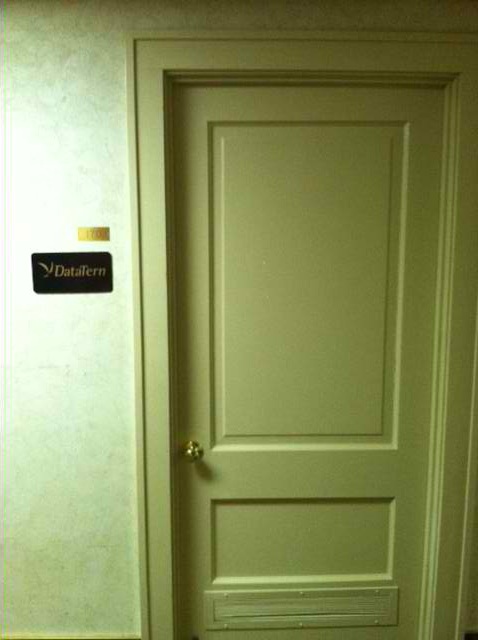
US federal courts are divided into 94 districts. When patent-holders file a lawsuit against a product that's sold nationwide, they have pretty wide leeway as to where to file their case. That's allowed for quite a bit of "venue shopping" in patent cases, and several years ago the remote and rural Eastern District of Texas started to become surprisingly popular.
Over time, East Texas became known as a place very friendly to patent plaintiffs and unfriendly to patent defendants, particularly out-of-state or foreign tech companies. Judges there were reluctant to let cases be transferred out of their district, and some patent-holding companies began setting up Texas LLCs in order to better argue that Texas was the right venue for them.
Many of those companies are "headquartered" in small offices in the building next door to the federal courthouse in Marshall; or they're in the Energy Center in Tyler, a historic but generic-looking office building that once housed Exxon's local offices back in Texas' oil heyday.

Despite all that, East Texas' popularity with patent holders looked to be waning. In 2011, for the first time in a few years, Delaware, not East Texas, became the most popular district to file suit.
New data released this week shows that East Texas is back on top. According to a report by the law firm Perkins Coie, 1,260 patent cases were filed last year in East Texas, compared to just under 1,000 that were filed in Delaware.
The year Delaware won that distinction, the district had the most patent lawsuits of any judicial district, with 484 suits filed. East Texas ran second, with 418.
The number of suits filed in 2011 is much lower because of new rules that came into effect with the America Invents Act, which generally bars plaintiffs from suing a large number of companies in a single lawsuit. However, that has just led to plaintiffs filing larger numbers of suits in the same district. It's not clear at this point if the "one defendant, one lawsuit" rule is really doing anything in terms of limiting sprawling or frivolous cases; all it does is raise plaintiffs' initial costs by a few hundred dollars per defendant. If anything, it may be making it harder for defendants to coordinate, form joint defense groups, and limit costs.
Rounding out the list of most popular venues for 2012: the Central District of California, which includes Los Angeles and is the nation's largest judicial district by population, was third place with 514 patent suits. The Northern District of California (SF Bay Area) was fourth, with 258, and the Northern District of Illinois (Chicago) was fifth, with 237.
Why the East Texas charm doesn't die
Some news reports (including the linked Reuters report) continue to call East Texas a "rocket docket," but that hasn't been true for years. Patent suits filed in Texas since 2008 typically take two to three years to reach trial. The Eastern District of Virginia remains a true "rocket docket," where patent suits can go from filing to trial in less than one year. Speedy litigation is thought to favor plaintiffs.
But East Texas has other qualities that have made it perennially attractive to patent-holders. Most importantly, defendants are very unlikely to win a case on summary judgment, as judges in the district are much more likely to find that it's appropriate for juries to rule on patent issues. That dramatically raises the cost, and risk, for defendants.
And those trials tend to be short, as it can be tough to put on an effective defense, especially with multiple defendants. Trials are often over within a week; the invalidity trial over the Eolas patent, a case with the potential to affect the future of the whole Web, took place in all of four days.
In addition, juries are thought to be more inclined towards large verdicts. That has been true in some cases, but not in others. Certainly, defendants can and do win cases in East Texas. Google has beaten multiple troll cases in East Texas. Last year, Pier 1 Imports was sued by a patent troll called Alexsam over its gift card system and won a defense victory.
Patent trials in East Texas have become commonplace as the hundreds of cases filed from 2007 onward wend their way through the judicial system. Last year, a widely condemned patent owned by Eolas and the University of California went to trial in the district. That patent was used to claim ownership of the "interactive Web," and Eolas demanded more than $500 million from Google, Amazon, and Yahoo before trial. The company lost when its patent was invalidated by a jury after a four-day trial, in which Tim Berners-Lee flew down from Cambridge to testify. Later in the year, a shell company called DDR Holdings went to trial arguing that a patent stemming from a defunct dot-com called Nexchange entitled it to royalties from the biggest players in online travel and was successful.
reader comments
33